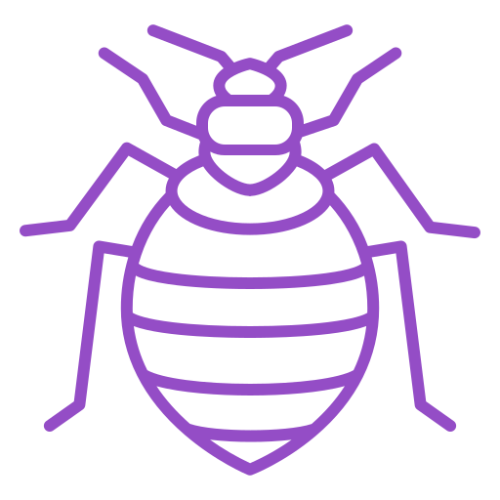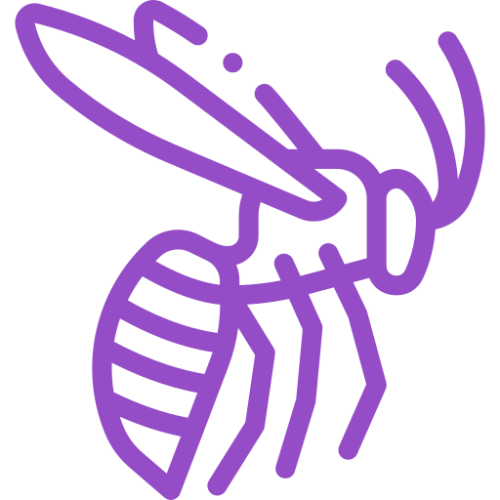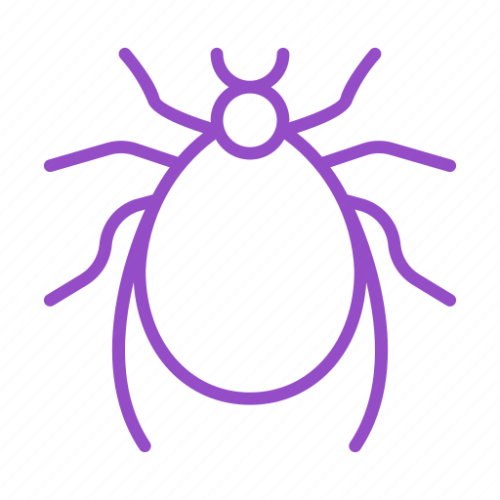Tick Control and Exterminator Service
The Best Tick Exterminator And Tick Control Services Near Me!
Enjoy the Great Outdoors Without the Tick Worry! SmartGreen Pest and Mosquito Control in Woodstock, GA, is your local ally against these tiny troublemakers. Since 2014, we've been providing eco-friendly solutions and top-notch customer service. Our tick control services are tailored to keep your outdoor spaces safe and tick-free. Let us be your partner in creating a worry-free environment for your family and pets. Trust SmartGreen for effective and personalized tick control that lets you savor every moment outdoors. Contact us today – because your outdoor adventures should be tick-free and full of joy!
We Provide Tick Control and The Following Services:
SmartGreen Pest and Mosquito Control is dedicated to exterminating and preventing pest infestations on your property. Our services eradicate the most common and even uncommon pest types. You can count on us for:
Trust SmartGreen Pest and Mosquito Control exterminators in Woodstock, Kennesaw, GA and surrounding areas to get rid of all types of insects around your property. Call (404) 937-7088 today to request eco friendly pest control at your home or office.
Understanding Ticks: An Overview
Ticks are small arachnids that belong to the order Parasitiformes, specifically the subclass Acari. They are ectoparasites, meaning they live on the outside of their hosts and feed on their blood. Ticks are known for their ability to transmit diseases, making them a significant concern for both humans and animals.
Tick Anatomy and Life Cycle
Ticks have a distinct body structure consisting of a head, thorax, and abdomen. They also have specialized mouthparts designed for piercing the skin and feeding on blood. The size and appearance of ticks can vary depending on their species and stage of development.
Ticks go through four stages in their life cycle: egg, larva, nymph, and adult. The life cycle duration can range from several weeks to several years, depending on the tick species and environmental conditions. During each stage, ticks require a blood meal to progress to the next stage.
Common Tick Species
There are numerous species of ticks found worldwide, each with its preferred hosts and habitats. Some of the most common tick species include:
- Blacklegged Tick (Ixodes scapularis): Also known as the deer tick, this species is a carrier of Lyme disease and is commonly found in wooded areas.
- American Dog Tick (Dermacentor variabilis): These ticks are commonly found in grassy areas and can transmit diseases such as Rocky Mountain spotted fever.
- Lone Star Tick (Amblyomma americanum): Known for the white spot on the back of adult females, this tick species is found in the southeastern and eastern United States and can transmit diseases like ehrlichiosis and tularemia.
Diseases Transmitted by Ticks
Ticks are notorious for transmitting various diseases to humans and animals. Some of the most common tick-borne diseases include:
- Lyme Disease: Caused by the bacterium Borrelia burgdorferi, Lyme disease can lead to symptoms such as fever, fatigue, joint pain, and neurological problems if left untreated.
- Rocky Mountain Spotted Fever: This bacterial infection, transmitted by ticks, can cause fever, headache, rash, and in severe cases, organ failure.
- Babesiosis: A parasitic infection that attacks red blood cells, babesiosis can lead to symptoms such as fever, fatigue, muscle aches, and anemia.
Understanding the anatomy, life cycle, common species, and diseases associated with ticks is crucial in implementing effective tick control measures. By gaining knowledge about these parasites, you will be better equipped to protect yourself, your family, and your pets from tick infestations and the diseases they carry.
Identifying Tick Habitats and Seasons
Ticks have specific habitats where they thrive and reproduce, and their activity levels vary throughout the year. Understanding their preferred habitats and active seasons is essential in implementing targeted control measures. In this section, we will explore common tick habitats and the seasons when they are most active.
Common Habitats of Ticks
Ticks can be found in a wide range of environments, including:
- Wooded Areas: Ticks are prevalent in forests, where they can latch onto animals and humans passing through.
- Tall Grass and Shrubs: Ticks often reside in tall grasses and shrubs, waiting for a suitable host to pass by.
- Gardens and Landscaped Areas: Ticks can hide in gardens and landscaped areas, especially if they provide favorable conditions like moisture and shade.
- Parks and Recreational Areas: Ticks can be present in parks, hiking trails, and other recreational areas, especially those with dense vegetation.
- Animal Habitats: Ticks are commonly found in areas where animals frequent, such as pastures, barns, and pet enclosures.
Identifying these common tick habitats can help you take preventive measures and reduce the risk of tick encounters.
Tick Active Seasons
Ticks have specific seasons when they are most active and pose a higher risk of infestation. While their activity can vary based on the geographic location and climate, there are general patterns to be aware of:
- Spring: As temperatures rise, ticks become more active. Spring is a crucial time for tick control measures, as nymphal ticks (young ticks) are often most abundant during this season.
- Summer: Ticks are highly active during the summer months, especially in warm and humid climates. Adult ticks are prevalent during this time, increasing the risk of transmission of tick-borne diseases.
- Fall: Fall is another peak season for tick activity, as ticks prepare for winter by seeking hosts to feed on. It's important to remain vigilant during this time, as ticks can still be active until the first frost.
- Winter: Although tick activity decreases significantly during winter, it doesn't mean they disappear entirely. In regions with mild winters, ticks can remain active, particularly in protected microhabitats like leaf litter or animal burrows.
Understanding the specific seasons when ticks are most active allows you to implement targeted prevention strategies and be more cautious during high-risk periods.
By identifying common tick habitats and understanding their active seasons, you can take proactive steps to reduce the risk of tick encounters and minimize the chances of tick-borne diseases. The next section will delve into effective prevention methods for tick infestations.
Prevention Methods for Tick Infestations
Preventing tick infestations is crucial to safeguarding the health and well-being of yourself, your family, and your pets. In this section, we will explore various prevention methods that can help minimize the risk of tick encounters and reduce the chances of tick-borne diseases.
Personal Protective Measures
- Wear Protective Clothing: When venturing into tick-prone areas, wear long-sleeved shirts, long pants, and closed-toe shoes. Tucking pants into socks and shirts into pants creates a barrier that makes it harder for ticks to reach your skin.
- Use Tick Repellents: Apply EPA-approved tick repellents containing DEET, picaridin, or IR3535 on exposed skin. Follow the instructions on the product label for safe and effective use. For children, choose repellents with lower concentrations of active ingredients.
- Treat Clothing with Permethrin: Permethrin-treated clothing can provide long-lasting tick protection. Pre-treated clothing or DIY permethrin sprays can be used to treat clothing, shoes, and gear.
- Perform Regular Tick Checks: After spending time outdoors, thoroughly check your body, clothing, and gear for any ticks. Pay close attention to areas such as the scalp, behind the ears, underarms, and groin. Promptly remove any attached ticks.
Home and Yard Maintenance
- Keep Lawns Well-Maintained: Regularly mow the lawn, trim shrubs, and remove leaf litter to create a less favorable environment for ticks. Letting sunlight reach the ground helps to dry out tick habitats.
- Create Physical Barriers: Install physical barriers such as fences or wood chips between the yard and tick-prone areas like wooded areas or tall grass.
- Remove Tick Habitats: Clear away brush, tall grass, and leaf piles from around the house and yard. Ticks thrive in moist and shaded areas, so reducing these environments can discourage their presence.
- Consider Landscaping Modifications: Consider landscaping modifications to create a less tick-friendly environment. This may include creating a wide, dry border between wooded areas and the yard or incorporating plants that naturally repel ticks.
Pet Protection
- Use Tick Preventive Products: Consult with your veterinarian about tick preventive products suitable for your pets. These may include spot-on treatments, oral medications, tick collars, or topical sprays.
- Regularly Check and Groom Pets: Thoroughly check your pets for ticks after they have been outside, paying attention to areas like the ears, neck, and between toes. Promptly remove any ticks found.
- Maintain a Tick-Free Environment for Pets: Keep your yard well-maintained and free from tick habitats. Regularly wash pet bedding and vacuum areas frequented by your pets to remove any ticks or eggs.
By implementing personal protective measures, maintaining your home and yard, and ensuring pet protection, you can significantly reduce the risk of tick infestations. However, in cases where prevention methods may not be sufficient, prompt tick removal becomes crucial. The next section will guide you through the steps of removing a tick safely and effectively.
Steps to Effectively Remove a Tick
Ticks can attach themselves to the skin and feed on blood, increasing the risk of disease transmission. Prompt and proper tick removal is essential in minimizing this risk. In this section, we will outline the steps to effectively remove a tick from the skin.
Tools Needed for Tick Removal
- Fine-Tipped Tweezers: Use tweezers with a fine, pointed tip to grasp the tick as close to the skin's surface as possible.
- Tick Removal Tool: Alternatively, you can use a specialized tick removal tool, such as a tick spoon or tick twister, designed to safely and easily remove ticks.
The Tick Removal Process
- Prepare the Area: Ensure good lighting and have a clean, well-lit workspace. Put on gloves, if available, to minimize direct contact with the tick.
- Grasp the Tick: Using fine-tipped tweezers or a tick removal tool, grasp the tick as close to the skin's surface as possible. Be careful not to squeeze or crush the tick's body.
- Slowly Remove the Tick: With a firm and steady motion, pull the tick upward, away from the skin. Do not twist or jerk the tick, as this may cause the mouthparts to break off and remain embedded in the skin.
- Avoid Home Remedies: Do not attempt to suffocate the tick with substances like petroleum jelly, alcohol, or nail polish. These methods may cause the tick to regurgitate, increasing the risk of disease transmission.
- Dispose of the Tick: Place the tick in a sealable bag or container and dispose of it properly. Submerging the tick in alcohol or flushing it down the toilet are common disposal methods.
Aftercare and When to Seek Medical Advice
- Clean the Bite Area: Clean the bite area with soap and water or an antiseptic solution. This helps reduce the risk of infection.
- Monitor for Symptoms: Keep an eye on the bite area for any signs of infection or an allergic reaction. Also, be vigilant for any symptoms of tick-borne diseases in the following weeks.
- Seek Medical Advice: If you experience severe pain, swelling, redness, or develop flu-like symptoms after a tick bite, consult a healthcare professional. They can evaluate the situation, provide appropriate treatment, and conduct tests if necessary.
Remember to document the date of the tick bite and any relevant details, such as the location where the tick was likely acquired, as this information may be useful for medical purposes.
By following these steps and properly removing ticks from the skin, you can reduce the risk of disease transmission and ensure proper aftercare. However, for individuals who prefer professional assistance or encounter persistent tick infestations, seeking the help of a tick control service may be necessary. The next section will explore professional tick control services and when to consider them.
Professional Tick Control Services
While personal prevention methods and tick removal techniques can be effective, there may be instances where professional tick control services are necessary. In this final section, we will discuss when to consider professional tick control, what to expect from a professional service, and how to choose a reliable tick control provider.
When to Consider Professional Tick Control
- Persistent Tick Infestations: If you have tried various prevention methods but continue to experience recurring tick infestations in your home or yard, it may be time to seek professional assistance.
- High-Risk Environments: If you live in an area with a high prevalence of tick-borne diseases or have a property surrounded by tick-prone habitats, professional tick control services can provide an added layer of protection.
- Lack of Time or Expertise: If you have limited time, knowledge, or resources to effectively address tick infestations on your own, professional tick control services can alleviate the burden and ensure thorough treatment.
What to Expect from a Professional Service
- Inspection: A professional tick control service will conduct a thorough inspection of your property to identify tick habitats, breeding grounds, and potential entry points.
- Treatment Plan: Based on the inspection findings, the professionals will develop a customized treatment plan tailored to your specific needs. This may include a combination of targeted treatments, habitat modifications, and ongoing monitoring.
- Tick Control Methods: Professional services employ a range of tick control methods, such as residual sprays, granular treatments, and tick-specific insecticides. They may also utilize environmentally friendly options to minimize the impact on beneficial insects and the ecosystem.
- Follow-up Visits: Depending on the severity of the infestation and the treatment plan, professional tick control services may include follow-up visits to monitor the effectiveness of the treatment and make any necessary adjustments.
Choosing a Reliable Tick Control Service
When selecting a professional tick control service, consider the following factors:
- Experience and Expertise: Look for a service provider with a proven track record and experience in dealing with tick infestations. Check for certifications, licenses, and the expertise of their staff.
- Reputation and Reviews: Research customer reviews, testimonials, and ratings to gauge the reputation and reliability of the tick control service.
- Integrated Pest Management (IPM) Approach: Choose a service provider that follows an Integrated Pest Management approach, which focuses on long-term prevention and minimizes the use of chemicals whenever possible.
- Insurance and Guarantees: Ensure that the tick control service provider has proper insurance coverage and offers guarantees for their services.
- Cost and Service Plans: Compare the costs and service plans offered by different tick control companies. Consider factors such as the extent of the infestation, the size of the property, and the level of service required.
By selecting a reliable tick control service, you can effectively address tick infestations and minimize the risk of tick-borne diseases in your home and yard.
In Conclusion, this comprehensive guide has provided you with a wealth of information on
tick control. From understanding ticks and their habitats to implementing prevention methods, removing ticks, and considering professional services, you are now equipped with the knowledge and tools to protect yourself, your family, and your pets. By taking proactive measures and staying vigilant, you can effectively control tick infestations and enjoy a tick-free environment.
Ready To Get Rid Of Ticks?
Bottom line- A reduced amount of less toxic materials in and around the home, combined with “IPM” strategies, results in less exposure for you, your loved ones and pets. In addition, we guarantee against all of the most common pests here in Georgia: ants, roaches, spiders, etc.
*SmartGreen offers additional services at discounted rates for pest control customers, these services include: Mosquito Control, Termite Control, Flea and Tick Control, Pantry Pests Programs and Yard Applications.*







